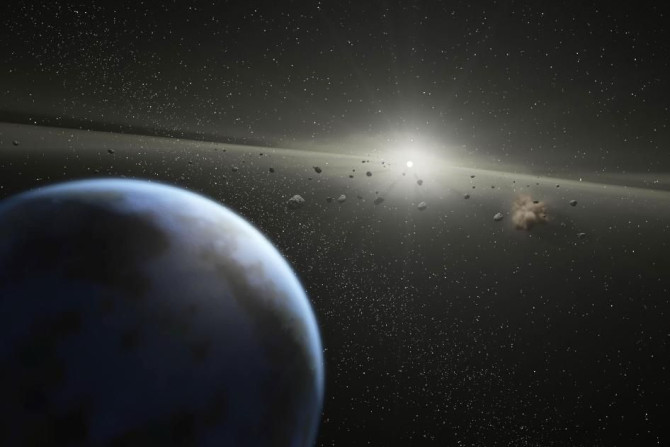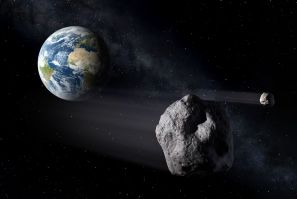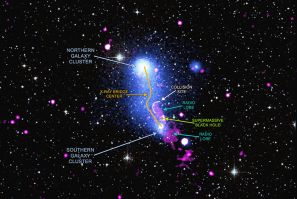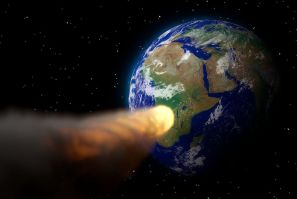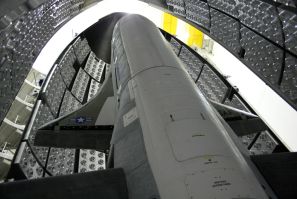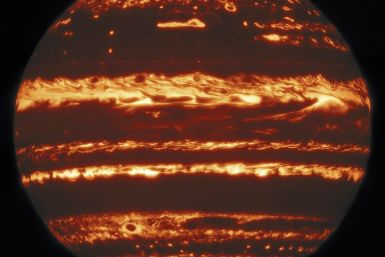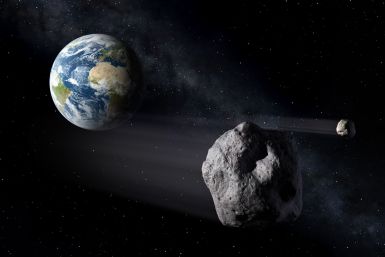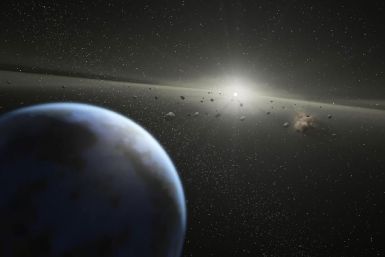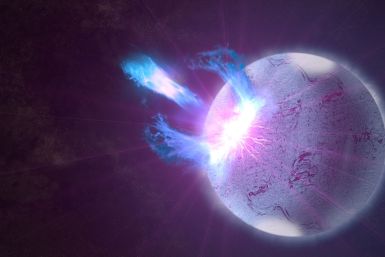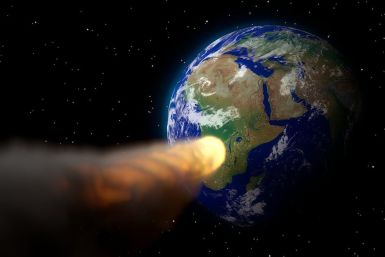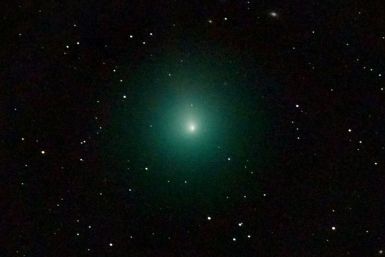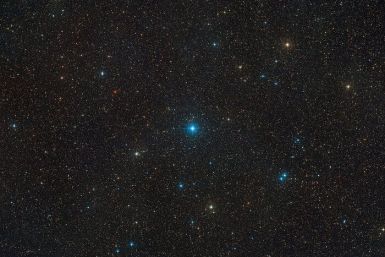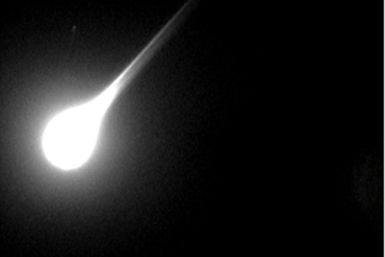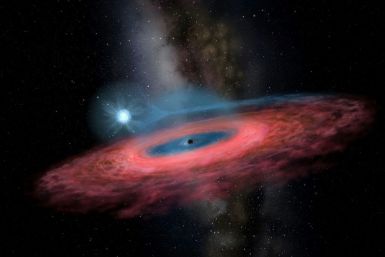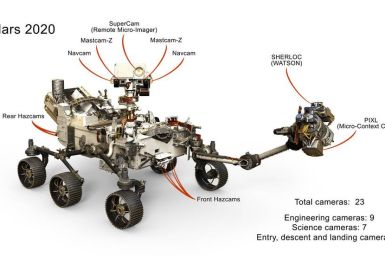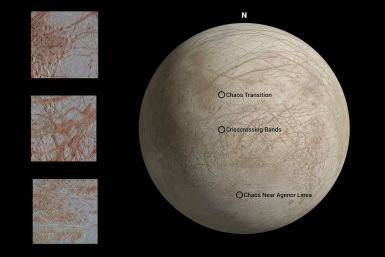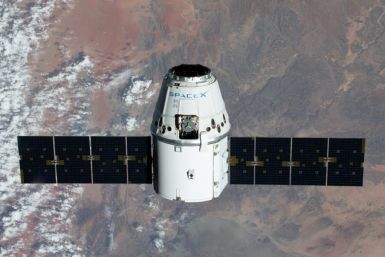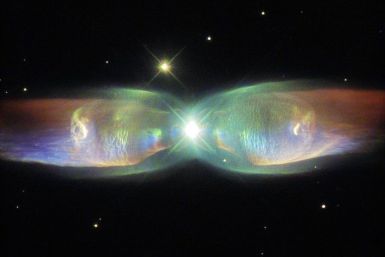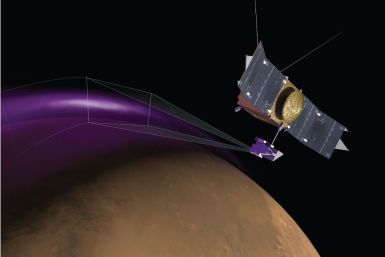A team of astronomers was able to capture the sharpest image of the planet Jupiter ever taken from Earth. In the new image, the planet looked like a glowing jack-o-lantern.
The Russian space agency Roscosmos confirmed that one of its defunct spacecraft orbiting Earth had broken apart. The agency noted that it is currently tracking fragments from the spacecraft.
NASA’s asteroid tracking system has spotted the biggest asteroid that will fly past Earth this month. Measuring at almost 5,000 kilometers wide, the approaching asteroid has been classified as “potentially hazardous.”
NASA’s automated asteroid tracking system has spotted a massive asteroid that will approach Earth on Sunday (May 10). According to the data collected by the agency, the approaching asteroid is about as tall as a skyscraper.
A team of astronomers has detected a new batch of alien signals from space known as fast radio bursts (FRB). However, unlike previous discoveries, the new batch of FRBs originated from within the Milky Way.
NASA has detected a massive asteroid that’s expected to safely fly past Earth on Friday.
Russian space agency Roscosmos confirmed that one of its officials recently passed away.
Astronomers observing the approaching comet SWAN have detected a powerful outburst from its surface.
Scientists at the European Southern Observatory (ESO) were able to detect the closest black hole to Earth.
NASA’s automated asteroid tracking system has detected a total of five asteroids that are expected to safely approach Earth on Thursday.
Residents of Portugal spotted a bright fiery object streaking across the sky over the country. Based on reports by eyewitnesses, it seems a small asteroid entered Earth’s atmosphere and turned into a meteor fireball over Portugal.
A group of astrophysicists claimed in a new study that alien life could exist in planets with atmospheres mainly composed of hydrogen. The new findings could change the way scientists hunt for signs of alien life in exoplanets.
A new study revealed that the biggest black hole ever discovered in 2019 is not real. According to the authors of the study, the mass of the monster black hole was inaccurately measured.
NASA’s newest robotic rover will be equipped with the most advanced pair of “eyes” ever sent to Mars. Through the instrument, the Perseverance rover will be able to thoroughly explore the Red Planet.
NASA’s automated asteroid tracking system is currently monitoring five asteroids that are expected to approach Earth. According to the data collected by the agency, the approaching asteroids will safely fly past Earth on Tuesday (May 5).
NASA has released reprocessed images of Jupiter’s moon Europa that were taken during a previous flyby mission. According to the agency, the reprocessed images help in identifying new features on the moon in preparation for the Europa Clipper mission.
Researchers recently discovered that like solar flares and extreme space weather, earthquakes and tsunamis could also disrupt Earth’s ionosphere. According to the researchers, the effects of these Earth-based natural disasters on the ionosphere could interfere with radio communications and scramble GPS signals.
NASA and SpaceX have revealed that the company’s first crewed commercial flight to the International Space Station (ISS) has been affected by the ongoing COVID-19 pandemic.
The European Space Agency (ESA) shared a photo of a striking nebula that was previously captured by the Hubble Space Telescope. The nebula’s unique appearance was caused by the interactions between a dying star and a white dwarf.
A group of researchers was able to discover the new timeline of Mars’ ancient magnetic field. According to the researchers, the magnetic field on the Red Planet may have formed much earlier than previously thought.
NASA’s automated asteroid tracking system has detected three near-Earth objects that will safely fly past the planet on Monday (May 4). Based on the data collected by the agency, the largest asteroid in the group is about as big as the Great Pyramid of Giza in Egypt.
NASA’s Center for Near-Earth Object Studies (CNEOS) has detected five asteroids that are expected to fly past Earth. The approaching asteroids will zip past the planet on Saturday (May 2) and Sunday.


